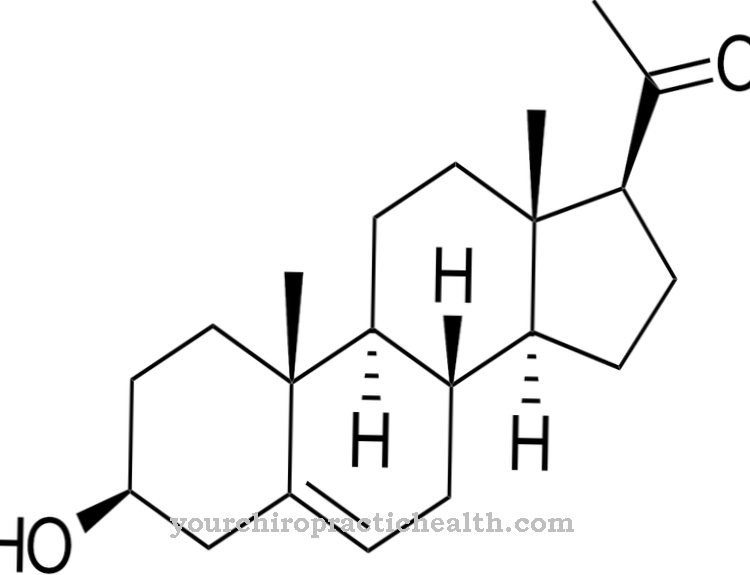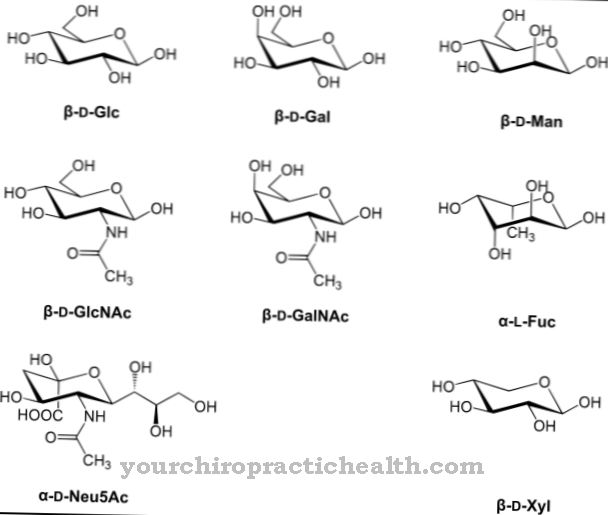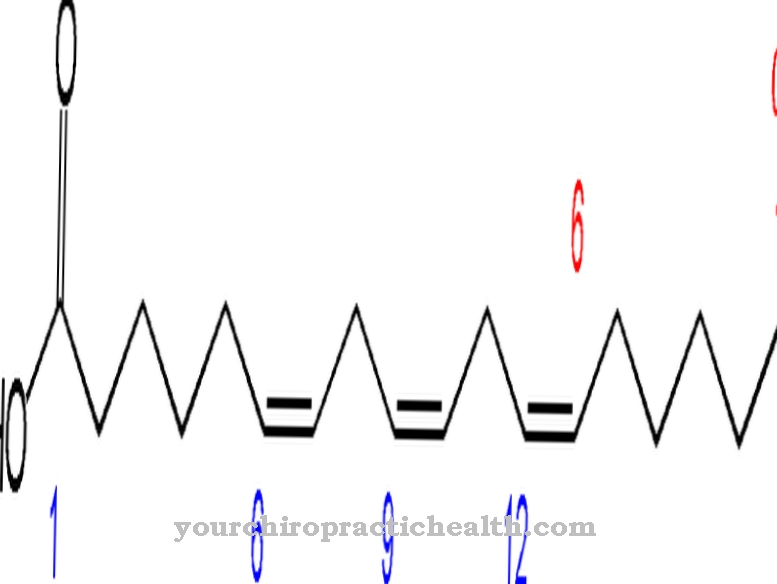Estrone belongs to the group of estrogens and thus to the female sex hormones. It is made in the ovaries, adrenal gland, and subcutaneous fat.
What is estrone?
Estrone is the main estrogen in postmenopausal women. In addition to estrone, estradiol and estriol also belong to the estrogens. Other spellings for these hormones are estrone, estradiol, and estriol.
Actually, estradiol is the most effective estrogen. After menopause, however, the ovaries produce less estrogen, so that estrone becomes more important. The control of the formation of estrogens is subject to the pituitary gland. The effects of estrone are varied. For example, disturbances in the estrone household can lead to many different symptoms.
Function, effect & tasks
Estrogens and therefore also estrone are the most important female sex hormones. The main task of estrone before menopause is to promote the maturation of a fertile egg cell. Estrogens stimulate the growth of the uterine lining in the so-called proliferation phase in the first half of the cycle.
This proliferation phase begins immediately after menstruation and ends with ovulation. The hormones ensure good blood flow to the mucous membrane and also signal to the pituitary gland that the egg cell is ready for action. This then produces the luteinizing hormone (LH). Ovulation is triggered by the surge in LH. So estrone is also indirectly involved in ovulation. But estrone does not only work in the ovary area. There are receptors for estrogens on various organs, such as the female breast or the uterus.
From there, the hormones are channeled directly into the cell nucleus and thus influence cell activity. They stimulate the growth of the female sexual organs. Estrogens have a protective effect in the bones. Too low an estrogen level can lead to bone loss. The hormones also have a stimulating effect on the immune system. It is interesting that estrogens in the brain increase hearing sensitivity. With a decreased level of estrogen, the hearing ability decreases. In addition, estrogens, and thus also estrone, are important for storing sounds and speech in memory.
Education, occurrence, properties & optimal values
Estrogens belong to the class of steroid hormones and are produced in the ovaries and in the adrenal cortex. A special feature of estrone is that it can also be obtained from the subcutaneous fatty tissue. There, a male hormone (androstenedione) is converted into the female sex hormone estrone through a chemical conversion process.
This is particularly important in the post-menopausal period. In women after menopause, 95% of the estrone is obtained from the hormones DHEA and androstenedione, which are formed in the adrenal cortex and in the ovary. This is also the reason why the fat content on the stomach increases in women after the menopause. This fatty tissue is required for the production of estrone.
The production and release of estrone is controlled by the anterior pituitary gland. The pituitary makes the follicle-stimulating hormone (FSH). The FSH is then transported to the ovaries via the bloodstream, where it stimulates the production of estrogens. If the level of estrogens is sufficient, the production of FSH in the pituitary gland is reduced again. The estrogens are also released according to a certain rhythm. At the beginning of the cycle, the ovaries produce rather little estrone, but a lot of estrone is formed shortly before ovulation.
The standard values of estrone are cycle-dependent. In the follicular phase, the first phase of the cycle, the estrone level in the blood should be between 25 and 120 ng / l. In the middle of the cycle, the value usually rises to 60 to 200 ng / l. In the luteal phase, i.e. the second half of the cycle, the value should be over 200 ng / l. During the menopause, the estrone value levels off between 15 and 80 ng / l.
Diseases & Disorders
In particular, women with polycystic ovarian syndrome and women who are overweight have increased estrone levels. In polycystic ovarian syndrome, the ovaries and the adrenal cortex lead to an increased production of male sex hormones. These are then increasingly converted into estrone in the fatty tissue. Overweight patients have higher estrone levels because they have more fat tissue.
Due to the high estrogen level, the pituitary gland is stimulated to produce LH. However, the estrogen levels do not drop again as in a normal cycle, but remain high. The LH levels also remain high. In return, the pituitary gland releases less FSH. As a result, ovulation no longer or only rarely occurs. Women with PCO and women who are very overweight can therefore not or only very difficultly become pregnant. If ovulation does not occur, the so-called corpus luteum does not form either. This normally determines the course of the second half of the cycle through the production of certain hormones.
As a result, menstrual cycle disorders occur. Menstruation rarely comes, sometimes it even stops. Without ovulation, the follicles in the ovaries perish.This creates many small scars and the tissue of the ovary is remodeled into connective tissue. As a result, the ovary is damaged and can only insufficiently perform its function as a hormone producer. In Germany, every fifth to tenth woman is affected by polycystic ovarian syndrome.
During the menopause there is a lack of estrone. The so-called estrogen deficiency syndrome is responsible for many of the typical menopausal symptoms. However, adrenal insufficiency or hormonal contraception can also lead to an estrogen deficiency. This manifests itself in symptoms such as menstrual irregularities, vaginal dryness, hot flashes, dry eyes or infertility.












.jpg)



.jpg)










.jpg)
